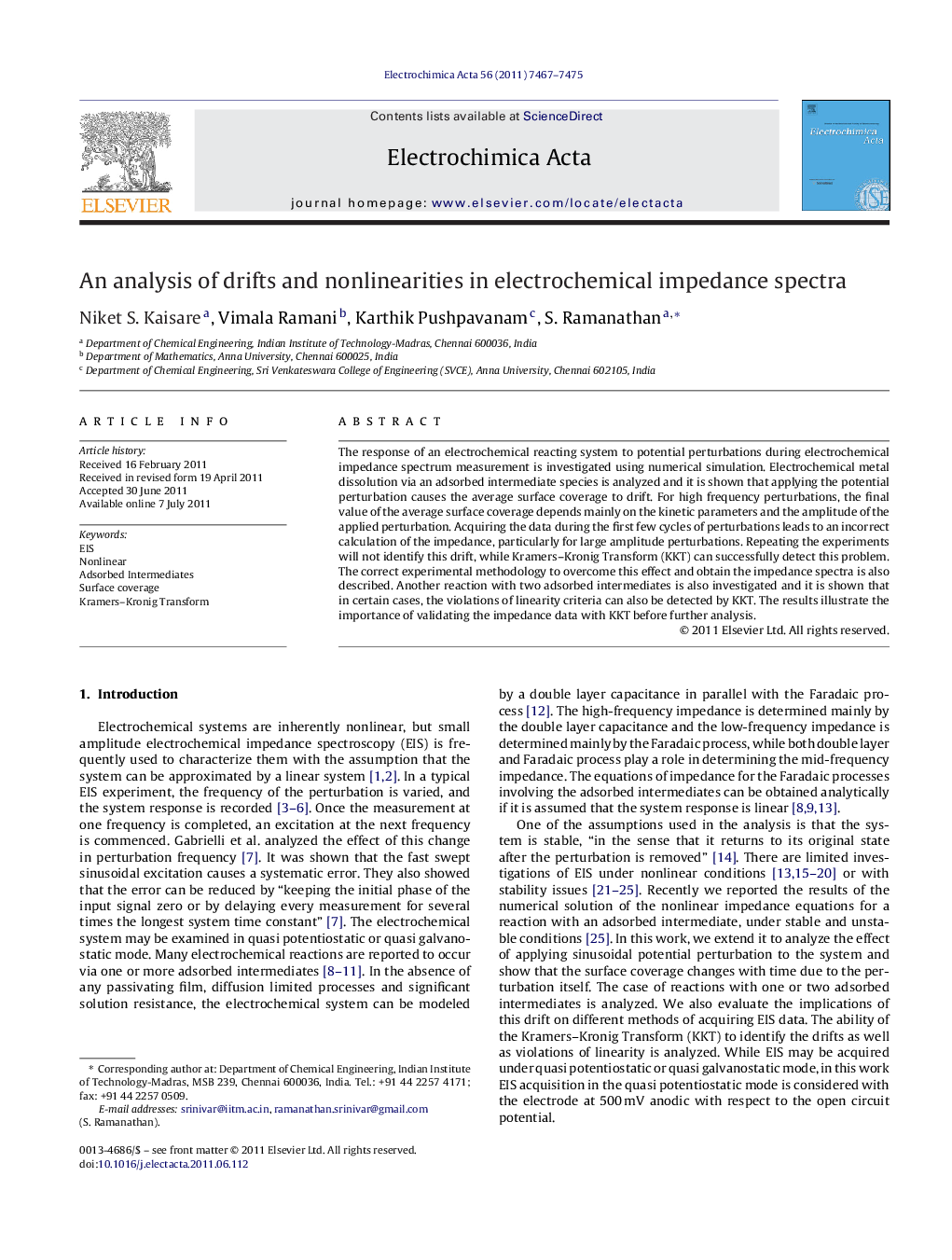| Article ID | Journal | Published Year | Pages | File Type |
|---|---|---|---|---|
| 190800 | Electrochimica Acta | 2011 | 9 Pages |
The response of an electrochemical reacting system to potential perturbations during electrochemical impedance spectrum measurement is investigated using numerical simulation. Electrochemical metal dissolution via an adsorbed intermediate species is analyzed and it is shown that applying the potential perturbation causes the average surface coverage to drift. For high frequency perturbations, the final value of the average surface coverage depends mainly on the kinetic parameters and the amplitude of the applied perturbation. Acquiring the data during the first few cycles of perturbations leads to an incorrect calculation of the impedance, particularly for large amplitude perturbations. Repeating the experiments will not identify this drift, while Kramers–Kronig Transform (KKT) can successfully detect this problem. The correct experimental methodology to overcome this effect and obtain the impedance spectra is also described. Another reaction with two adsorbed intermediates is also investigated and it is shown that in certain cases, the violations of linearity criteria can also be detected by KKT. The results illustrate the importance of validating the impedance data with KKT before further analysis.
► EIS response of reaction via adsorbed intermediates analyzed. Numerical simulation. ► Surface coverage drifts during measurement. Analytical solution confirms results. ► Correct experimental strategy to overcome the drift effect identified. ► Kramers–Kronig Transforms identify the drift and in certain cases, nonlinearities.
